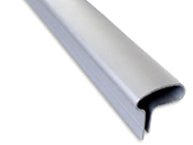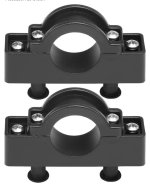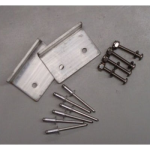I have a Clipper canoe with hollow, slightly rounded aluminum gunwales (see image). I have things I want to mount to the gunwale, namely a set of outriggers.

Can I drill and bolt/rivet to these without ruining them? Everything in the canoe is mounted on brackets riveted to the hull, nothing from the factory is mounted to the gunwales and that makes me worry that I won't be able to.
This is what the mounts look like.


Can I drill and bolt/rivet to these without ruining them? Everything in the canoe is mounted on brackets riveted to the hull, nothing from the factory is mounted to the gunwales and that makes me worry that I won't be able to.
This is what the mounts look like.

Last edited:

